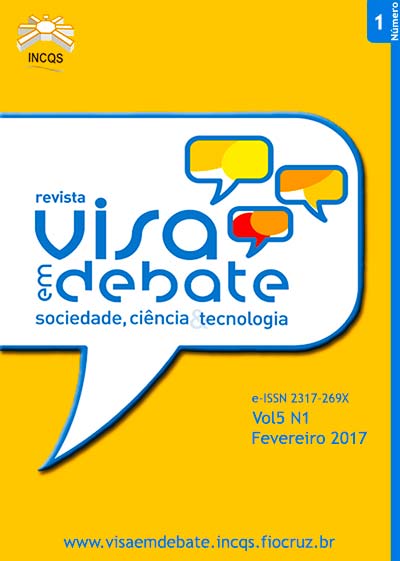Physicochemical and microbiological evaluation of water coming from alternative solutions of supply in the Metropolitan Region of Baixada Santista, São Paulo State, Brazil
DOI:
https://doi.org/10.22239/2317-269X.00805Keywords:
Drinking Water, Water Supply, Microbiologial Evaluation, Physical-chemical Evaluation, Public Health, Sanitary SurveillanceAbstract
Water is essential to life but its contamination may endanger public health. This study evaluated the physical-chemical and microbiological quality of alternative water supply solutions located in the Baixada Santista / SP. 67 samples (41 water spouts, 13 springs and 13 wells) were initially collected, and then 22 new collections were made. Total coliforms and Escherichia coli, according to the methodology of APHA (2012) and the contents of chloride, free residual chlorine (in treated waters), apparent color, hardness, iron, fluoride, nitrate, nitrite, odor, pH, total dissolved solids, and sulfate turbidity, were counted according to the techniques described by ANVISA (2005). Of the total of the samples, 56 (83,6%) were not in compliance with Decree 2914/2011 of the Ministry of Health, which refers to the potability of water for human consumption. The tests with the highest percentage of unsatisfactory results were E. coli, 39 (58,2%); apparent color 16 (23,9%) and nitrate, 15 (22,4%). A frequent monitoring of the quality of these waters is suggested – carrying out measures for their treatment, such as chlorination-, as well as a clarification to consumers about the quality of these waters by the competent bodies and the media for the benefit of the population’s health.Downloads
Downloads
Published
Issue
Section
License
Copyright (c) 2017 Health Surveillance under Debate: Society, Science & Technology (Vigilância Sanitária em Debate: Sociedade, Ciência & Tecnología) – “Visa em Debate”

This work is licensed under a Creative Commons Attribution-NonCommercial-NoDerivatives 4.0 International License.
COPYRIGHT ALLOWANCE The author (s) hereinafter designated as the ASSIGNOR hereby assign and transfer, free of charge, the ownership of the copyrights related to this ARTICLE to the Vigilância Sanitária em Debate: Sociedade, Ciência & Tecnologia (Health Surveillance under Debate: Society, Science & Technology) – Visa em Debate, represented by FUNDAÇÃO OSWALDO CRUZ, established at Av. Brasil, nº 4365, Manguinhos, Rio de Janeiro, RJ, Brazil, CEP 21045-900, under the conditions set out below: (a) The terms and conditions set forth in this Agreement shall apply to the following: 1. The ASSIGNOR declares that they s(he) is (are) the author (s) and owner (s) of the copyrighted property of the ARTICLE submitted. 2. The ASSIGNOR declares that the ARTICLE does not infringe the copyrights and / or other property rights of third parties, that the disclosure of images (if any) has been authorized and that they s(he) assume(s) full moral and / or property liability for its content, before third parties. 3. THE ASSIGNOR assigns and transfers all copyrights relating to the ARTICLE to the ASSIGNEE, especially the rights of editing, publication, translation into another language and reproduction by any process or technique. The ASSIGNEE becomes the exclusive owner of the rights related to the ARTICLE, and any reproduction, totally or partially, is prohibited in any other means of publicity, printed or electronic, without prior written authorization from the ASSIGNEE. 4. The assignment is free and, therefore, there will be no remuneration for the use of the ARTICLE by the ASSIGNEE.







